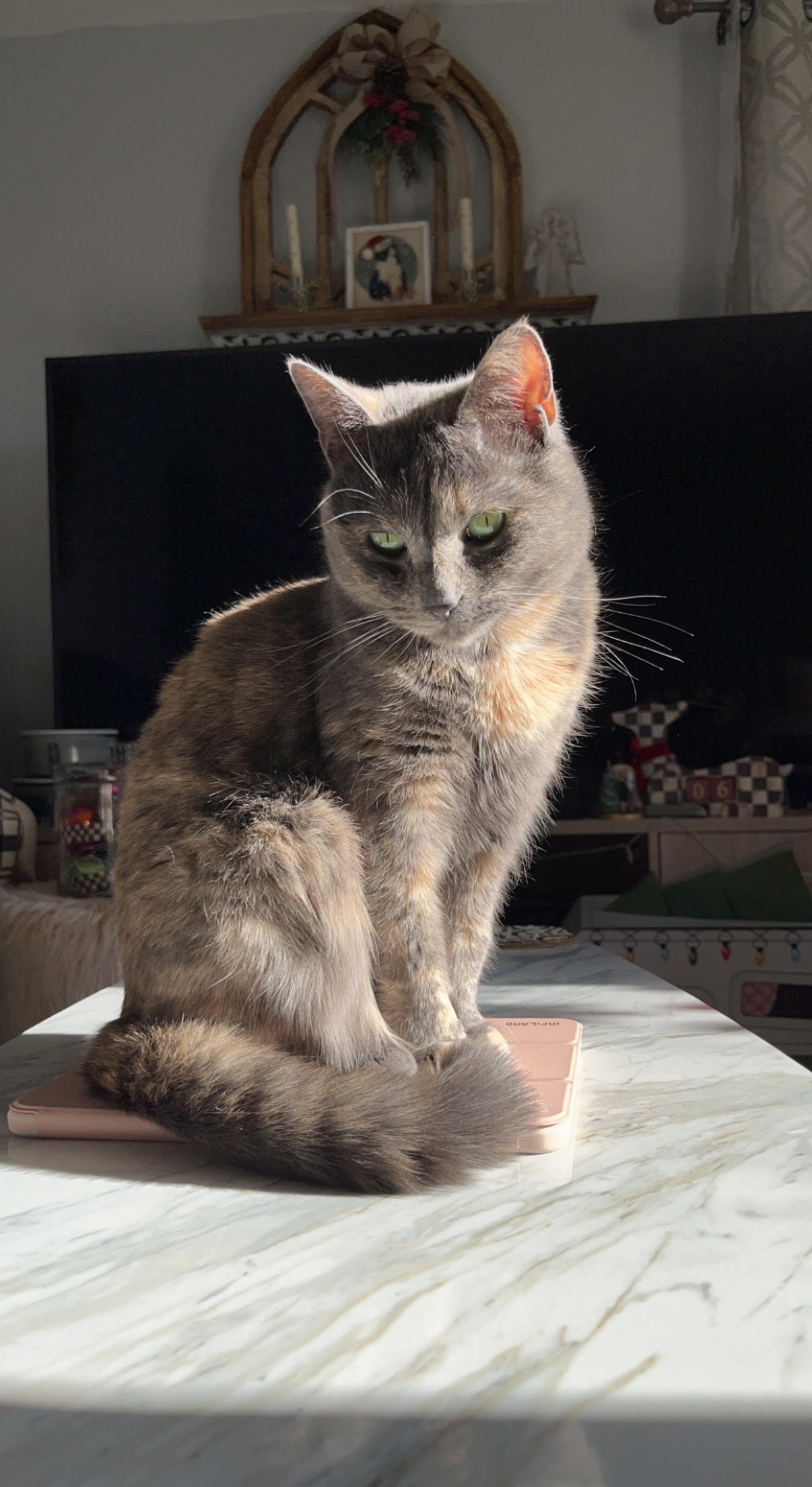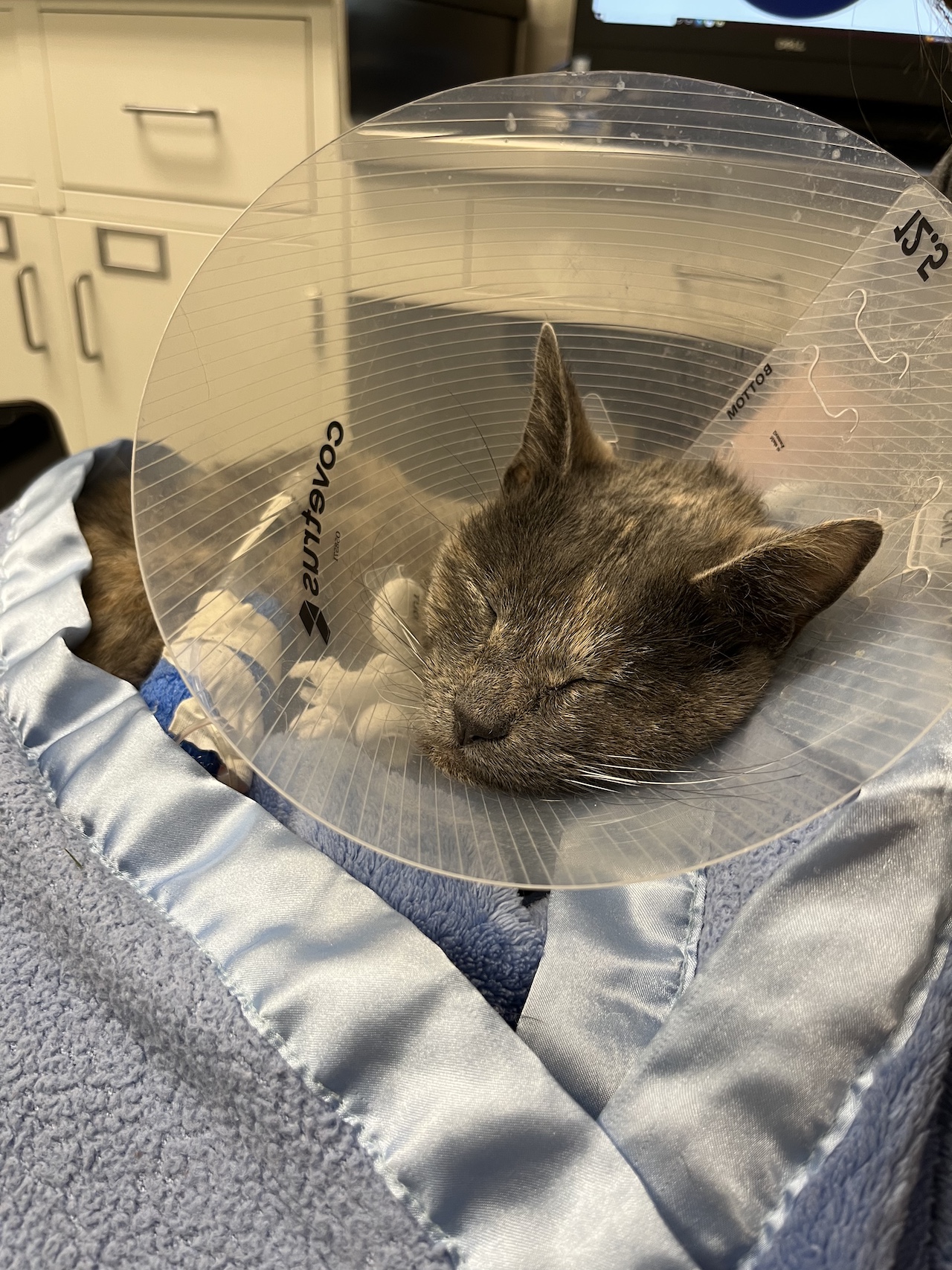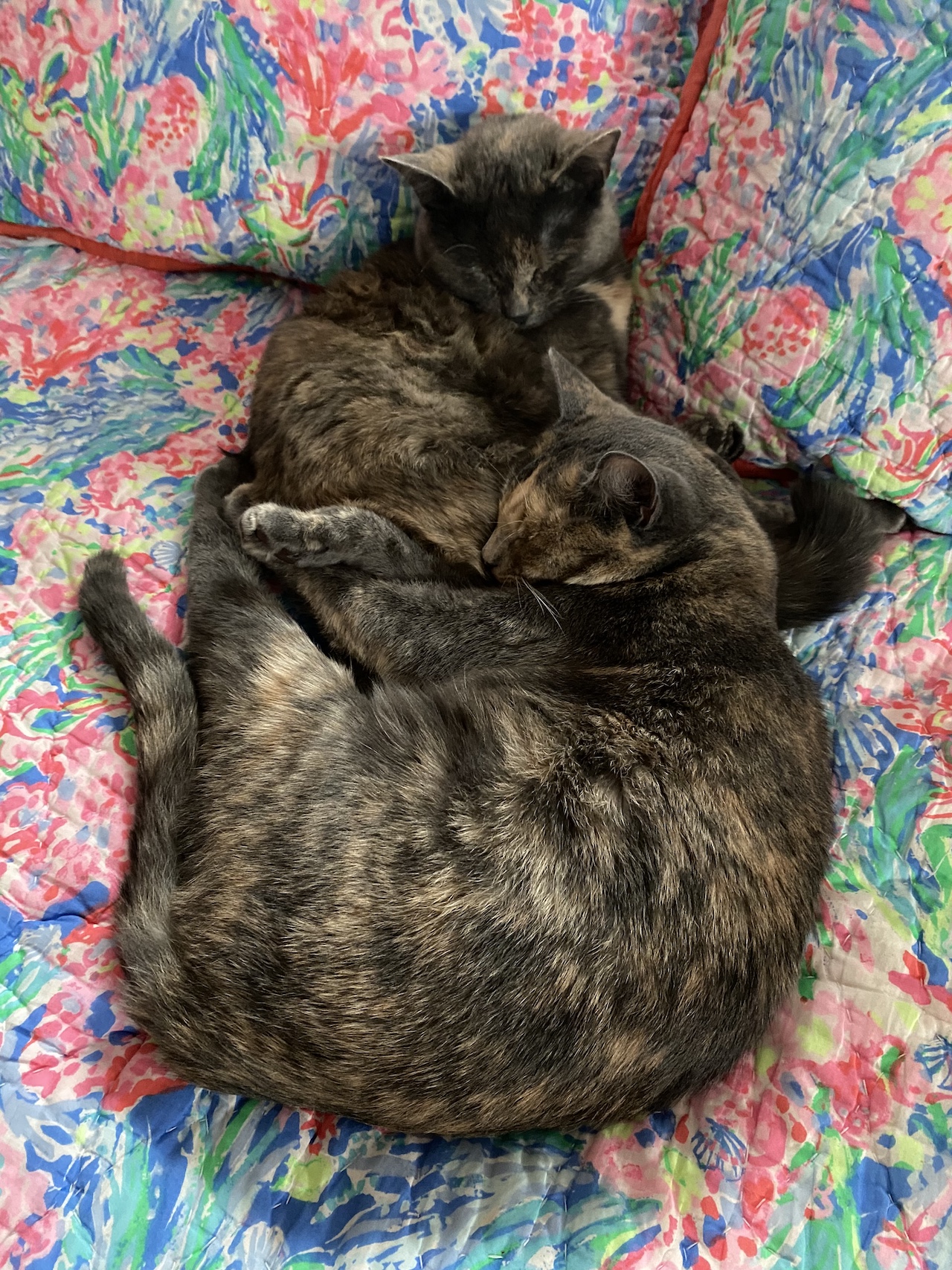Cornell tackles cat’s kidney failure

Elsa and Anna are anything but frozen. The two aptly-named cats, although not technically sisters, have been energetically playing together nearly all their lives. What’s more, they’re owned by human sisters Laura and Mary Schad.
But the cats’ sisterly bond was tested when Elsa, a then four-year-old dilute tortoiseshell, suddenly lost her usual energy. “We noticed starting in September that she was losing a little weight and vomiting more,” says Laura Schad. By mid-September, Elsa was consistently vomiting every day.
Matters escalated when Schad noticed that Elsa urinated while she slept, something she had never done before. Elsa went to a local veterinarian, who discovered she was in severe kidney failure. Not long after, the Schads decided to take Elsa to the Cornell University Hospital for Animals. There, the clinical team kept her under a few days of observation during which some kidney stones passed. However, when new stones appeared and caused another blockage, it was time for surgery.
“The cat had what is known as a ureteral obstruction — that’s a tube going from the kidney to the bladder that was obstructed,” explains Dr. Nicole Buote, associate professor of small animal surgery. “That tube is very small and in years past we would have to use an operating microscope to try and take the stones out and suture that ureter.”

Buote and small animal surgery resident Colin Chik, D.V.M. ’20, performed the procedure, with help from fourth-year veterinary student Sara Dutra, D.V.M. ’23.
Since the tissue is quite fragile and the ureter so small, at one time there would have been a high complication rate to this surgery, says Buote. “Complications would sometimes be up to 40 percent where a cat would have leakage of urine post-surgery,” she says. “Now, depending on the complications, we’re talking about major complications of leakage at somewhere below 5 percent.”
The reason for the change in prognosis was a device created roughly 10 years ago called a subcutaneous ureteral bypass, commonly known as a SUB. “It involves a tube that goes into the kidney to drain it. That tube is connected to a port, and another tube that goes into the bladder,” Buote says. “It’s all sort of connected so that urine goes from the kidney and enters the bladder.”
Fortunately for the pairs of sisters, Elsa’s surgery was a success.
“Post-operation, we monitor blood work to make sure the abnormalities are getting better, and we look at the kidney ultrasound every day,” Buote explains. “We make sure there doesn’t appear to be obstruction and the animal stays in the hospital on pain medications and antibiotics usually around two to three weeks.”

After Elsa returned home, she was kept indoors with an E-collar for the next two to three weeks to decrease the chances of post-operative complications. She quickly recovered and is almost back to her original weight.
Now, the dynamic duo of Elsa and Anna are back to their old tricks. “They’re best friends, running around, playing and napping together,” says Laura Schad.
But vigilance isn’t over for the Schads. Elsa must return to Cornell once every three months for the next year to check that her device is working. Additionally, she runs a higher life-long risk of urinary tract infections due to the plastic tubing. Nevertheless, the Schads are happy to have Elsa back to her usual self.
“It was incredible relief and just joy,” Schad says. “She’s the first cat that we’ve had, a great cat, and we got really close with working from home during the pandemic.”
Written by Eric Butterman




